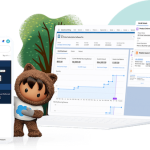I’ve been on the hunt for a house lately. This involves me sending out a lot of emails, and calling real estate agents about properties.
In doing so, the real estate agents capture my contact details. Even though I hadn’t opted-in for it, I started receiving at least weekly emails from dozens of different real estate agents. They made numerous marketing personalisation sins:
- Their list of properties seem to be the real estate’s inventory. Not a curated list of properties in my price range, in the suburbs I’m looking at, with the features I want.
- All of the properties link to the real estate agent’s website, rather than my preferred real estate listings site
- Each email contains a handful of properties (rarely good ones I might add). All linking to the real estate agent’s website (rather than my preferred real estate listings website).
- The email tends to get lost among all the other property-related emails in my inbox.
BUT their emails did start with “Hi Dan”, so everything’s great right?
Email isn’t my personal favourite channel. But there’s no denying that email is a superstar when it comes to ROI. Companies of all shapes and sizes will benefit from investing in strong email personalisation capabilities. However, for too many marketers, the real estate example is actually the best personalisation they’re doing today.
Digital advertising? Ask the media agency. SMS? Too expensive, just send more emails. Website personalisation? There are several country specific websites, but they’re identical.
Not good enough.
The sad reality is that too few marketers invest in the infrastructure and resources needed to deliver truly relevant and consistent messaging across every channel.
Why marketers need to embrace continuous improvement
People, in general, are uncomfortable with change. We like the known, the familiar. Yet, technologies and trends are always evolving. For example, customer data platforms are transforming the way pizza companies engage with their customers. Some brands have gone beyond personalisation to deliver hyper-personalised experiences: one-to-one conversations with each customer across all channels. Faced with such major changes, it’s natural for people to retreat to what’s familiar.
However, over the past year, brands have done the impossible. They have accelerated their digital transformation and compressed years of marketing development into a few months. This cannot be a one-time thing. Marketers need to adopt a philosophy of continuous improvement. There’s a reason business schools all around the world teach students the story of Toyota. Toyota’s kaizen philosophy is one of the key lessons that every successful business, regardless of country or industry, should take to heart.
Ask yourself if your company is doing everything they can in these areas:
- Data strategy: how is data collected and managed? Is it used to its full potential?
- Integration: is your data stuck in silos or unified in one easily accessible place?
- Data hygiene: is your database regularly cleansed, standardised, and de-duplicated?
- ID management: do you have unique customer IDs across channels that allow for omnichannel engagement?
- Reporting and analytics: is data used to drive marketing decisions? How automated is your reporting?
Start small, but start today
It’s a challenging time to be in marketing.
The remit of marketing has expanded beyond branding to encompass business growth and return on investment. There has been an explosive growth of marketing technology solutions over the years. As of April 2020, there are 8,000 marketing technology solutions. Digital skills training in the Asia-Pacific region needs to keep up with technological advances. For example, Singapore will need 1.2 million more digital workers by 2025 to remain competitive.
Don’t get overwhelmed with re-thinking your entire approach to marketing personalisation. It’s crucial to remember that perfect should never be the enemy of good.
Start small, but never stop moving forward. Seek continuous improvement. You can start by revamping your email newsletter, so that it is relevant to your audience. Then, you might sync your customer data to Facebook, so you aren’t advertising to people who actually look at your emails. Building on success, you can implement one-to-one engagement across all touchpoints, using real-time personalisation and interaction management solutions.
Know that you don’t have to do all of this on your own. The right partner can help to build and grow successful businesses. Take the team at Verticurl, a Salesforce partner, for example. They are experts on marketing technology and how marketers can make the most out of their marketing data. For example, how the deprecation of third party cookies will impact marketers and their personalisation efforts.
If you’re wondering where the gaps in your personalisation strategy are, check out Verticurl’s Database Maturity Assessment to see where there’s room for improvement.

























